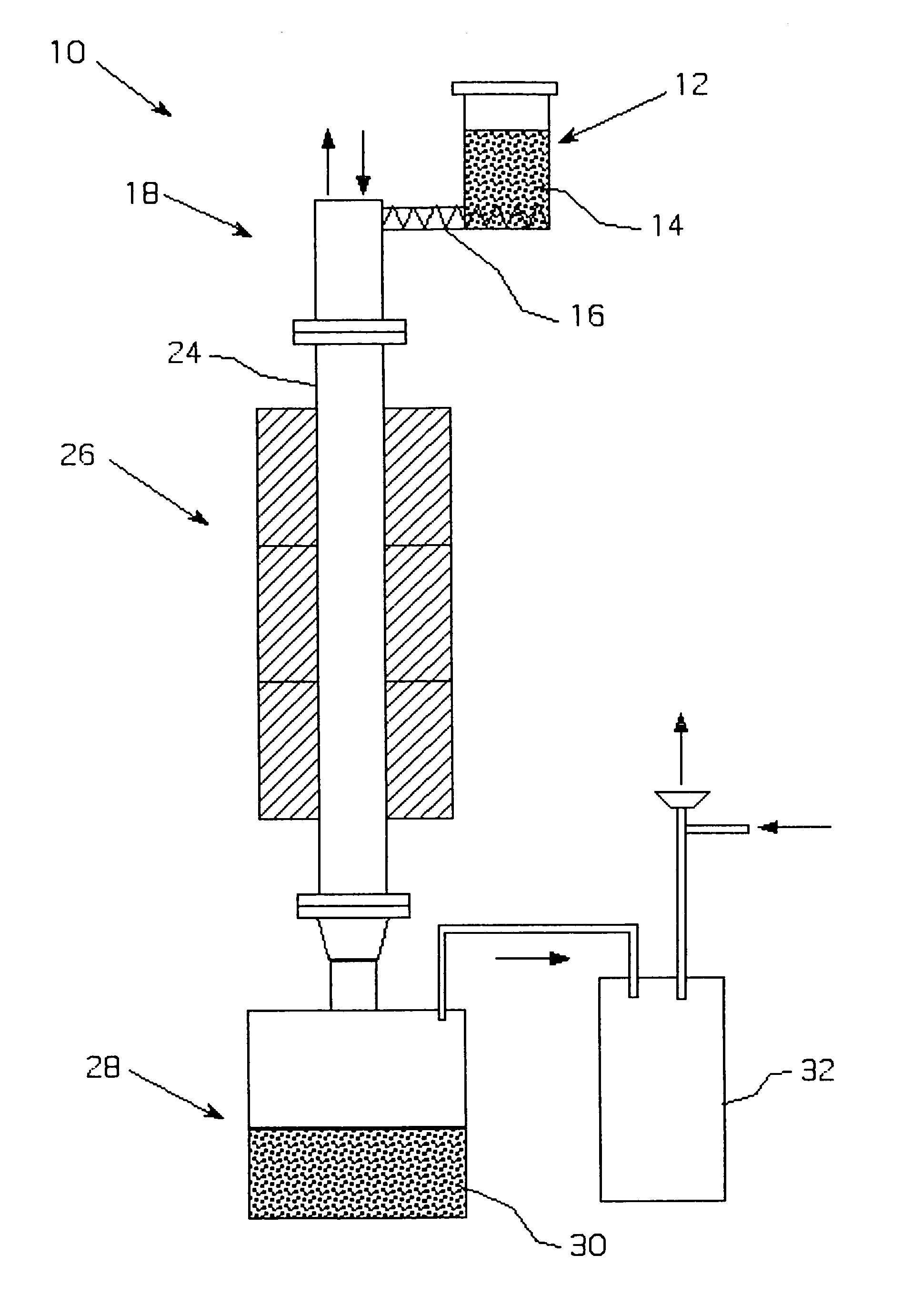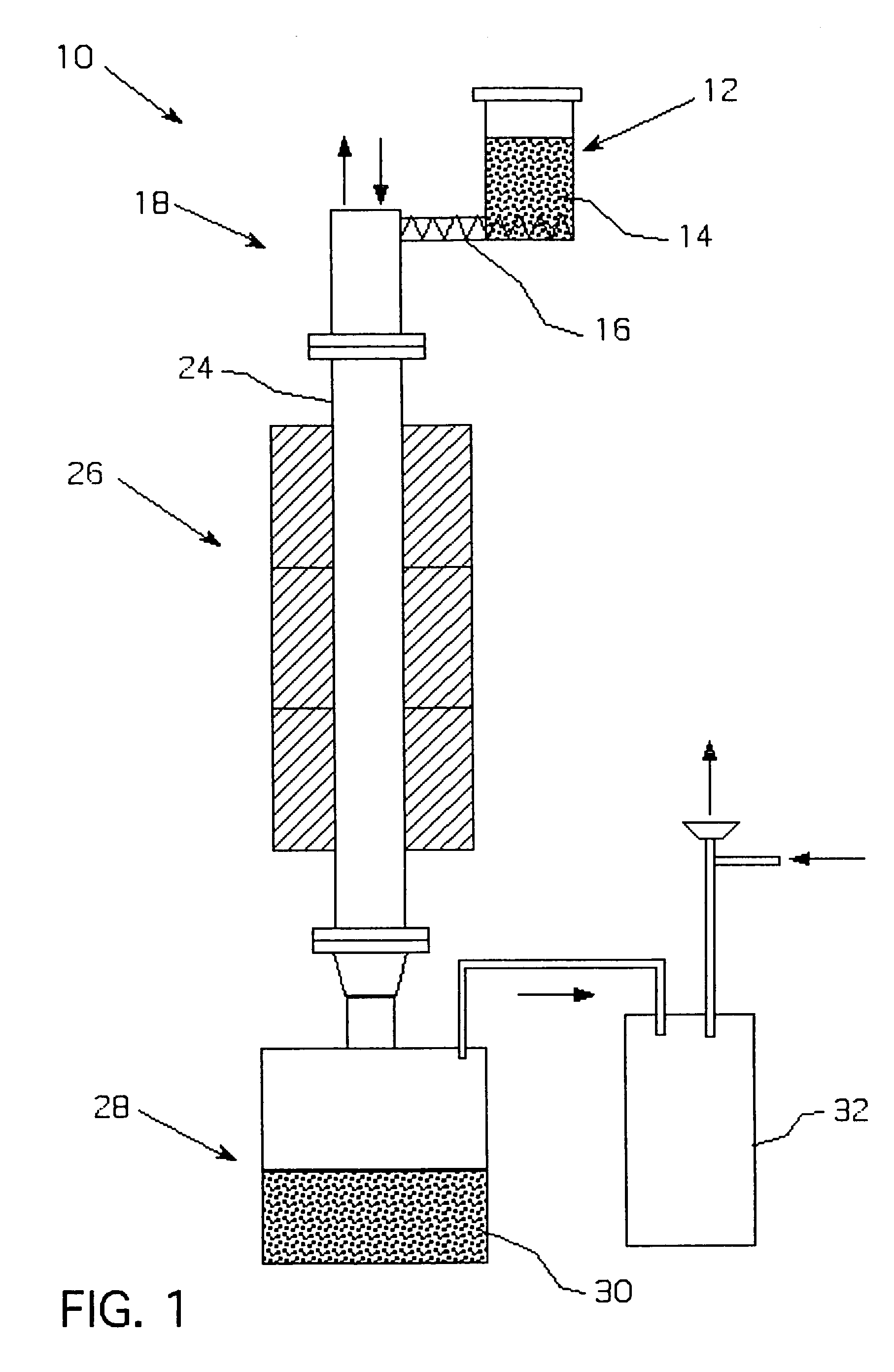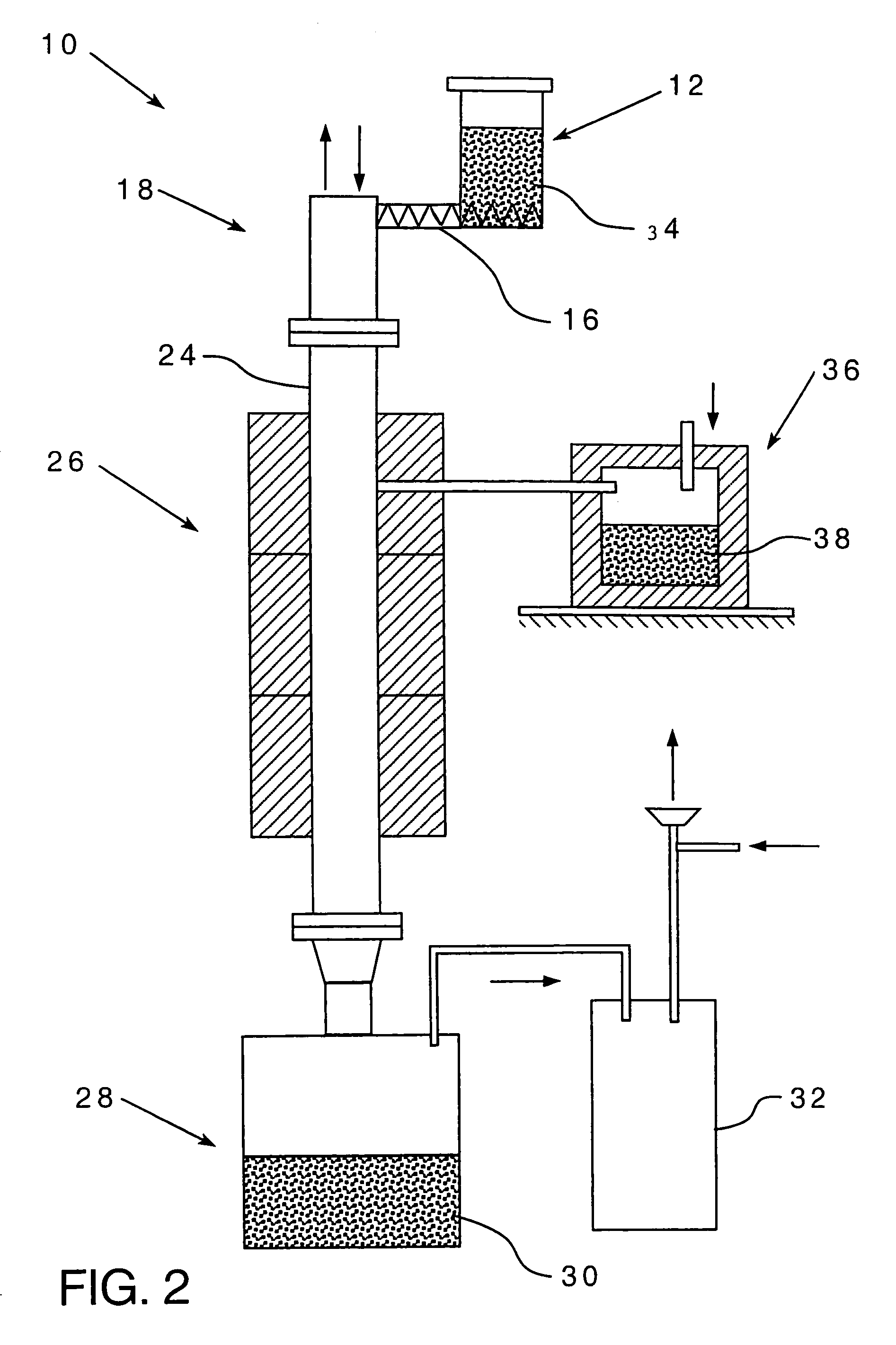Metalothermic reduction of refractory metal oxides
a technology of refractory metal oxides and metalothermic reduction, which is applied in the direction of titanium suboxides, chromium oxides/hydrates, fixed capacitor details, etc., can solve the problems of insufficient time for significant energy and mass exchange with the surrounding, and achieve the elimination of halide by-products and carbon contamination, and high quality
- Summary
- Abstract
- Description
- Claims
- Application Information
AI Technical Summary
Benefits of technology
Problems solved by technology
Method used
Image
Examples
example 1
[0046]Tantalum pentoxide was reduced with gaseous magnesium as shown in FIG. 2. The temperature in the magnesium melter was 975° C., while the temperature in the furnace was maintained at 985° C. to prevent magnesium condensation on the cold parts. The argon flow through the melter and the furnace was 55 scfh. The average oxide feeding rate 1.5 kg / h. The reduction lasted 3 hours. After passivation, the receiver was opened and the products were leached with dilute sulfuric acid to remove residual magnesium and magnesium oxide. The cake was then dried in the oven at 65° C. and analyzed. The surface area of the reduced powder was 17 m2 / g, the bulk density was 26.8 g / in3, and the oxygen content was 13.2 W / W %. The reduction was only 60% complete due to the inability to maintain a consistent oxide and magnesium feed rates, which caused instability in the self-sustaining reaction during the course of the run.
example 2
[0047]The reaction zone temperature was estimated from energy balance calculations and the results are plotted in FIG. 3 as a function of the blend feed rate. The following assumptions were made:[0048](1) The value of the energy losses was estimated to be 30% of the energy input. This is a reasonable approximation for the furnace design used.[0049](2) The kinetics of the chemical reaction is instantaneous and is not a function of either oxide or magnesium particle size.[0050](3) The argon flow rate was 1.8 Nm3 / hr.[0051](4) The furnace temperature was 1150° C.
[0052]The graph in FIG. 3 shows the reaction zone temperature may change significantly depending on the feed rate. At 7 kg / hr blend feed rate, the reaction zone temperature does not differ from the furnace temperature while at 30 kg / hr feed rate, it exceeds the melting point of tantalum pentoxide. When the reaction zone temperature is higher than the oxide melting point, there is a real possibility of coalescence, which can adve...
example 3
[0053]FIG. 4 shows the furnace power readings during the reduction of Ta2O5 with magnesium powder as a function of time for several blend feed rates. The graph shows the value of power change as a function of blend feed rate. The higher the feed rate, the greater is the power drop. In fact, at 20 kg / hr blend feed rate the electric power input dropped from 46 to 6%. In other words, the furnace was not supplying energy to the system. This is strong evidence that a stable self-sustaining reaction exists in the reactor.
PUM
| Property | Measurement | Unit |
|---|---|---|
| surface area | aaaaa | aaaaa |
| equivalent series resistance | aaaaa | aaaaa |
| equivalent series resistance | aaaaa | aaaaa |
Abstract
Description
Claims
Application Information
 Login to View More
Login to View More - R&D
- Intellectual Property
- Life Sciences
- Materials
- Tech Scout
- Unparalleled Data Quality
- Higher Quality Content
- 60% Fewer Hallucinations
Browse by: Latest US Patents, China's latest patents, Technical Efficacy Thesaurus, Application Domain, Technology Topic, Popular Technical Reports.
© 2025 PatSnap. All rights reserved.Legal|Privacy policy|Modern Slavery Act Transparency Statement|Sitemap|About US| Contact US: help@patsnap.com



